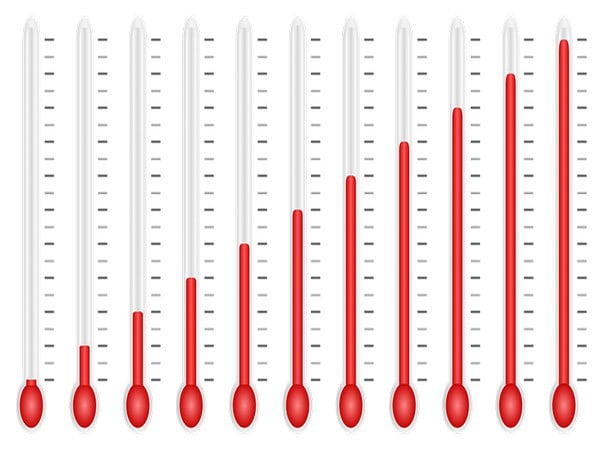Washington: A team of researchers has developed a new device to record minute temperature changes.
The Tokyo Institute of Technology researchers developed a micrometer-wide thermometer that is sensitive to heat generated by optical and electron beams and can measure small and rapid temperature changes in real time.
This new device can be used to explore heat transport on the micro- and nano-scales, and in optical microscopy and synchrotron radiation experiments.
This technology could be applied in photo-thermal cancer treatment as well as in advanced research on crystals, optical light harvesting. Moreover, a miniaturised thermal microscopy system with a nanoscale heat source and detector is essential for future development of next-generation transistors that will be employed in designing new nanoscale devices.
A thermocouple, which is an electrical device consisting of two dissimilar electrical conductors forming electrical junctions at differing temperatures, produces a temperature-dependent voltage, which can be interpreted to measure temperature.
The recently-developed micro-thermocouple is of major importance to researchers in many fields. This device consists of a gold and nickel thermocouple on a silicon nitride membrane and is miniaturised to the extent that the electrodes are only 2.5 micrometer wide and the membrane is just 30 nm thick.
For such a system to be used as a thermal characterisation device, i.e., a thermometer, it must show sensitivity to temperature change. The new micro-thermocouple exhibited high responsiveness to heat generated by a laser and an electron beam.
Importantly, tiny temperature changes were measured by it for both types of heating.
An already developed miniaturisation process was used to prepare the micro-thermocouple, but critical improvements were made. In the established method, a cross pattern of metal stripes with widths of a few micrometers is created, so that a thermocouple is produced.
The researchers and their colleagues used this technique to create a pattern on a nano-thin silicon nitride membrane, which enhanced the device sensitivity and enabled it to respond faster.
Through this approach, a thermometer that could measure fast and small temperature changes were successfully produced, with the measurements being performed through the nano-thin silicon nitride membrane.
As explained above, both a nanoscale heat source and a nanoscale detector are needed for a miniaturised thermal microscopy system. These requirements were successfully satisfied by the researchers, who used the nano-thin membrane and a tightly focused laser or electron beam to create a heat source with a diameter of lesser than 1 µm.
So, combined with the micro-thermocouple detector, a nanoscale thermal microscopy system was achieved. This system can be regarded as a new ‘toolbox’ for investigating heat transport behaviour on the micro- and nano-scales, with many important applications in a wide range of fields.
The findings from the study are published in the journal Scientific Reports. (ANI)

